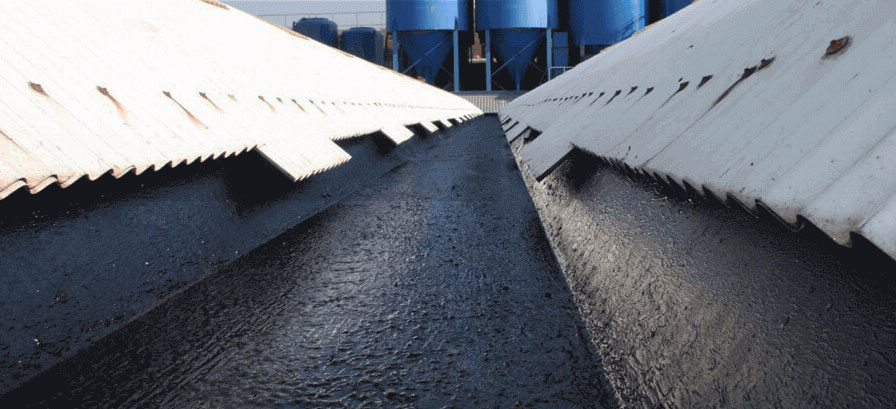Characteristics of Bituminous Membrane
Characteristics of Bituminous Membrane
- Home
- Water Proofing
- Waterproofing Products
- Bitumen Membrane
- What is Bituminous Membrane

Characteristics Of Bituminous Membrane
A bituminous membrane is a thin layer of water-tight material that is laid over a surface. This layer is continuous and does not allow water to pass through it. Its main purpose is to resist hydrostatic pressure exerted by moisture in the liquid state. Waterproofing membranes consist of waterproof plastic, rubber, or coated-fabric materials.
The materials are used in a system to prevent the ingress of water into foundations, roofs, walls, basements, buildings, bridges and structures when properly installed. Waterproofing membrane should be strong, flexible, tear-resistant and elastic so that it can stretch to cover cracks and also move with the building. If the membrane is to be exposed to the sun, then it should be UV stable. The membrane should be flexible enough to take any shape it is laid over, and be capable of turning up and over walls and other construction features.
A bituminous membrane is a thin layer of water-tight material that is laid over a surface. This layer is continuous and does not allow water to pass through it. Its main purpose is to resist hydrostatic pressure exerted by moisture in the liquid state. Waterproofing membranes consist of waterproof plastic, rubber, or coated-fabric materials.
The materials are used in a system to prevent the ingress of water into foundations, roofs, walls, basements, buildings, bridges and structures when properly installed. Waterproofing membrane should be strong, flexible, tear-resistant and elastic so that it can stretch to cover cracks and also move with the building. If the membrane is to be exposed to the sun, then it should be UV stable. The membrane should be flexible enough to take any shape it is laid over, and be capable of turning up and over walls and other construction features.
Location Of Waterproof Membrane
Depending on the structure and need, the waterproofing membrane can either be applied to the interior (negative), such as the case with repairs, the exterior (positive), or in places inaccessible by people (blindside).
Positive Side
Positive waterproofing membranes are applied to the exterior face of a structure. It can be applied above, below, or at grade to surfaces that will get wet due to exposure to weather conditions and the surrounding soil. Positive waterproofing is a critical step in construction because it prevents moisture infiltration and protects structural components, including the concrete and steel. It can also protect the surface from freeze-thaw cycles and corrosive chemicals. When used for below grade surfaces (such as sealing a foundation) it is available as a fluid applied membrane, sheet-membrane, or as hydros clay and vapor barriers. The disadvantage of positive side waterproofing is that it is inaccessible after construction except with costly removal of the topping landscape. Positive side waterproofing should be used alone when the surface will be exposed to corrosive soil, freeze-thaw cycles, and if there will be limitation to the interior humidity.
Negative Side
Negative side waterproofing is applied to the interior face of a structure. It keeps water from entering an occupied space and is applied to what is known as the dry face. Negative side waterproofing is primarily used for water holding purposes (prevent water from entering space), but it does not prevent the water from entering the substrate (wall). The materials used for negative waterproofing must be able to withstand hydrostatic pressure. The most commonly used materials are epoxy injections and cementitious coatings. The advantage of negative side waterproofing is that it is accessible after installation for repairs or updates. Negative side waterproofing allows moisture into the substrate which can be seen as an advantage and disadvantage. Moisture promotes active curing of the concrete substrate, but it contributes to the corrosion of the concrete and steel reinforcements from the groundwater and chemicals. This type of membrane does not protect against the effects of the freeze-thaw cycle and can only be used on cemenitious systems.
Blind Side
Blind side waterproofing is a difficult membrane to apply. It is used when the waterproofing can’t be applied after the walls of the structure have been poured. Blindside waterproofing is applied before the concrete structure is poured, generally over the soil retention system. This system is best used for “zero lot line” foundation walls, tunnels, and any job site in a high-density, build-up area. Blindside is often also used for “green” projects because it minimizes the amount of site area that needs to be disturbed.
Above vs. Below Grade
-
Above-grade waterproofing: Above-g rade waterproofing systems must meet several requirements. They must be breathable to prevent liquid from seeping into the space, but allow water vapor inside the wall to escape. Because the membrane will be exposed to light, it must be UV resistant. This is especially true for roofing systems. Above-grade waterproofing must be resistant to abrasion and corrosion because they are often used where there is a high volume of foot or vehicle traffic. This also means that they must be aesthetically pleasing. The term above grade applies to horizontal surfaces such as roofs, balconies, and parking docks, as well as vertical surfaces such as walls.
-
Below-grade waterproofing: Below-grade waterproofing systems are a required step in building a structure. In order to be effective, below-grade waterproofing systems must be resistant to hydrostatic pressure and chemical erosion, be able to perform in high groundwater, have a low absorption rate, uniform thickness, and be flexible. The material used for below grade waterproofing is determined by the properties of the surrounding soil.
Below-grade systems
- Hydrostatic pressure resistant.
- Structural movement capability.
- Most inaccessible after installation.
- Both positive and negative applications.
- Mostly barrier systems.
- Drainage enhancement a must.
Above-grade systems
- Ultraviolet-resistant.
- Thermal and structural movement capability.
- Breathable
- Traffic wear and weathering exposure.
- Aesthetically pleasing.
- Freeze-thaw cycle resistant.